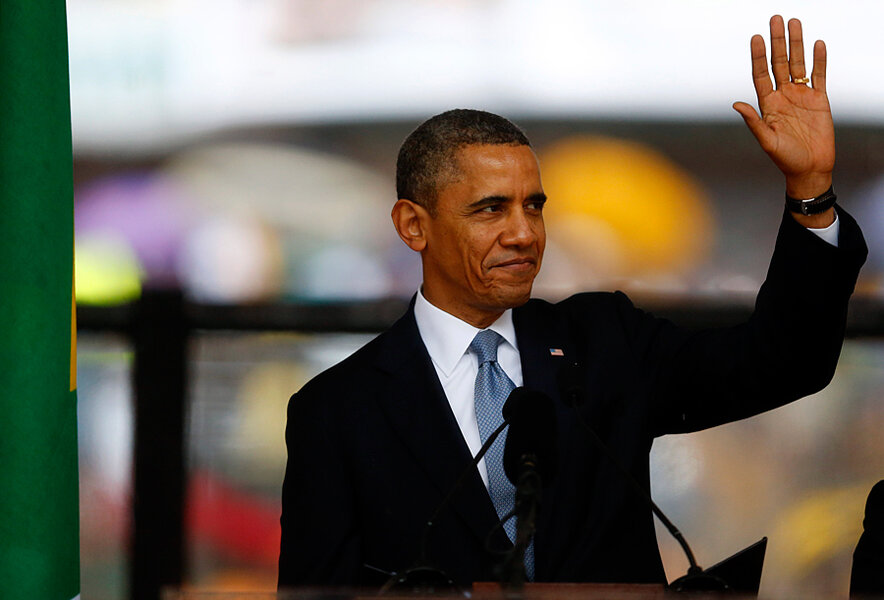Obama disapproval rating hits new high. What's driving poll numbers?
Loading...
Right now the numbers look bad for President Obama. Two new national polls show disapproval of his presidential performance at record highs.
An NBC News/Wall Street Journal survey released Wednesday found that 54 percent of respondents did not approve of the job Mr. Obama is doing as US chief executive. Forty-three percent approved, putting the president’s rating underwater by 11 points. That’s his worst showing ever in this poll.
Similarly, Quinnipiac on Tuesday released a survey that put Obama at 57 percent disapproval and 38 percent approval, for a negative spread of 19 points.
Quinnipiac also found the GOP ahead in the generic congressional ballot, with 41 percent of respondents saying they would vote for a Republican candidate for Congress and 38 percent opting for a Democrat.
“A rousing chorus of Bah! Humbug! for President Barack Obama as American voters head into the holidays with little charitable to say about the president,” said Tim Malloy, assistant director of the Quinnipiac University Polling Institute, in a statement.
“President Obama could be pretty lonely during his last two years in office if voters decide they want Republican majorities in the House and Senate,” Mr. Malloy added.
Remember, individual polls don’t really make a trend by themselves. It’s best to look at them in the context of other surveys to get an average of US attitudes.
When you do that, things look a bit better for Obama – but only a bit. Maybe not even a bit. Just a smidge.
According to the RealClearPolitics rolling average of major polls, Obama’s numbers bottomed out a week ago, with 56 percent disapproval and 40 percent approval, for a spread of negative 16 points. He’s recovered a bit since then, to a negative spread of 11 points.
But the RCP rolling average of the generic congressional ballot shows how far and fast the Democratic Party has fallen. In late October, Democrats had a seven-point advantage on this measure. Now the Republicans have pulled ahead and opened a three-point edge, their biggest this election cycle.
It’s easy to infer what’s driving these numbers by just looking at a graph of the rolling averages. Obama and the Democrats were doing OK until mid-to-late October, when things suddenly turned bad and their disapproval ratings rocketed up. That’s about the time that the full extent of HealthCare.gov’s problems hit the news media.
The new NBC/WSJ poll reflects this dynamic. Asked which issue has been most important in shaping their opinion of Obama, 58 percent said the health-care law. Twenty-five percent said the economy, 23 percent the government shutdown, and 16 percent issues in Syria and Iran. (These add up to more than 100 percent because respondents were able to list two answers apiece.)
Quinnipiac found the same thing: By 34 to 62 percent, Americans disapprove of Obama’s job on health care.
Unsurprisingly, the recovery or nonrecovery of Obamacare from its rocky start will probably have the most profound effect on the president’s numbers and whether Democrats hold or lose the Senate.
“As health care goes, so goes the Obama presidency for next year,” says NBC/WSJ co-pollster Fred Yang.








